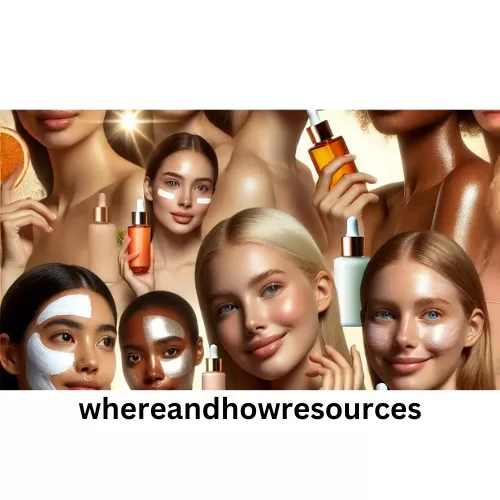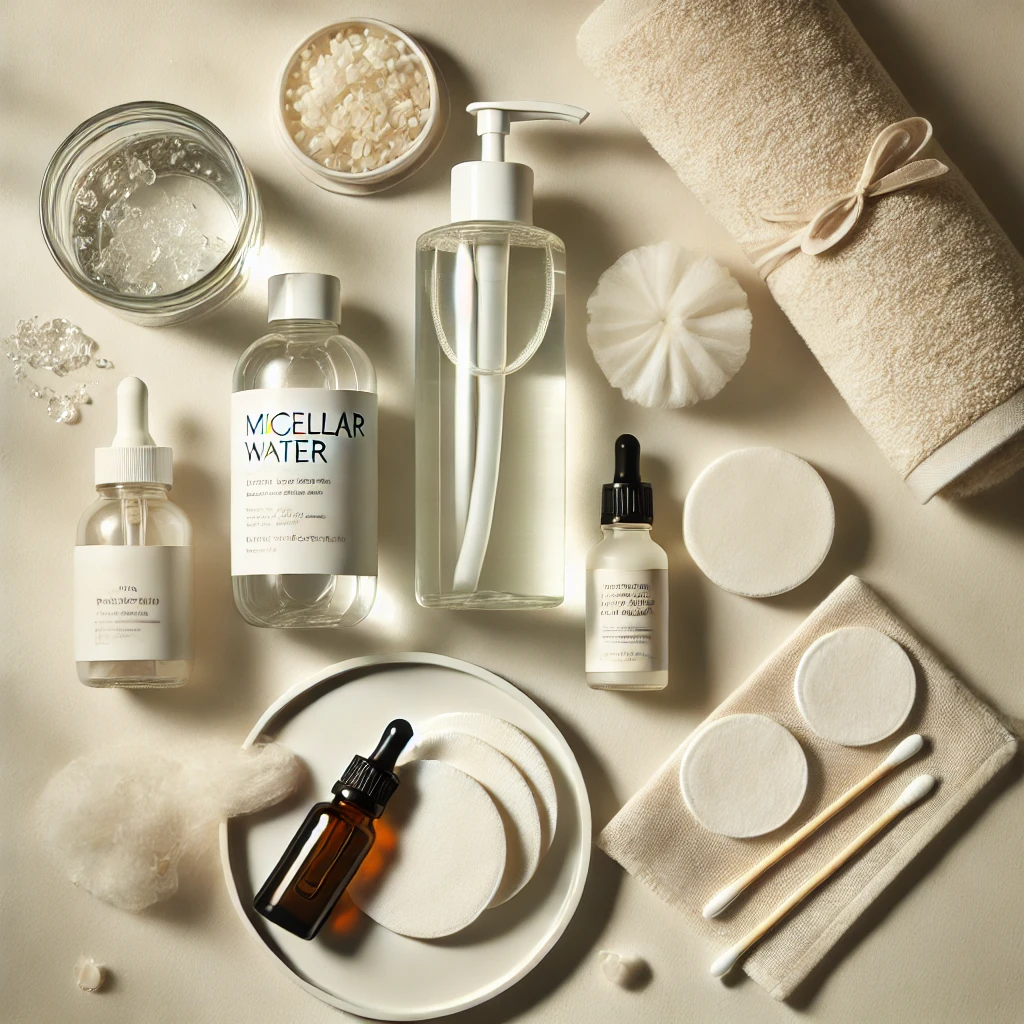The Hidden Cost of Long-Wear Makeup: Is It Harming Your Skin?
Long-wear makeup effects has revolutionized the beauty industry, offering 12 to 24-hour coverage without the need for touch-ups. While this may sound like a dream come true, the question remains—what is the long-term impact on your skin? From clogged pores to premature aging, extended wear of these products could be doing more harm than good.
In this article, we’ll explore whether 24-hour foundations cause long-term damage, the best way to remove long-wear products without irritating your skin, and alternative solutions for long-lasting coverage.
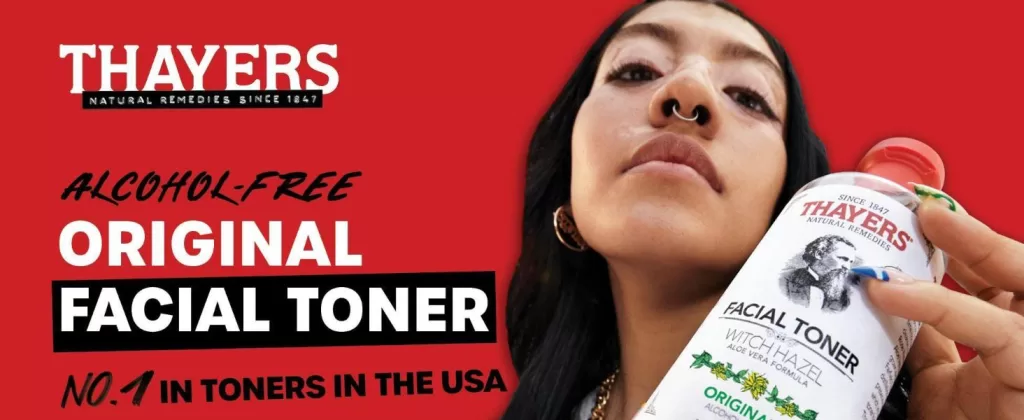
Do 24-Hour Foundations Cause Long-Term Damage?
Many 24-hour foundations and long-wear products achieve their impressive staying power through advanced cosmetic ingredients such as silicone polymers, siloxanes, and film-forming agents. These ingredients create a durable finish that resists common challenges like rubbing, fading, and breakdown caused by sweat, oil, or environmental factors. The result is a product that maintains its appearance and effectiveness over an extended period, making it ideal for those seeking reliable, all-day coverage.
However, these formulations come with trade-offs. The use of synthetic ingredients means that long-wear makeup is often not “all-natural.” While scientifically engineered compounds enhance durability, they may not align with the preferences of consumers who prioritize clean beauty. Additionally, many long-wear products contain alcohol-based ingredients to facilitate quick drying, which can strip the skin of moisture over time. This can lead to dryness, irritation, and an impaired skin barrier, making your skin more vulnerable to environmental stressors.
Another critical consideration is the lack of regulation surrounding the “24-hour” claim. Unlike SPF ratings or “broad-spectrum” designations, which are subject to strict testing standards, there is no universal benchmark for verifying the longevity of long-wear makeup. This doesn’t necessarily mean that brands are making false claims, but it does highlight the importance of consumer awareness. Savvy shoppers should inquire about how brands substantiate their claims—do they conduct real-world wear tests, or are their results based on controlled lab conditions? Understanding these factors can help consumers set realistic expectations and make informed purchasing decisions.
1. Clogged Pores and Breakouts
What Ingredients in Makeup Are Comedogenic and Can Lead to Acne?
When you’re choosing makeup products, it’s crucial to be aware of comedogenic ingredients—those that can clog pores and potentially cause acne. Many people experience breakouts, not realizing their cosmetics might be the culprits.
Key Comedogenic Ingredients to Watch Out For:
- Acetylated Lanolin: This modification of lanolin is often used for its emollient properties but can be pore-clogging.
- Cetearyl Alcohol and Ceteareth 20: While individually they might not be comedogenic, together in formulations they can lead to acne.
- Isopropyl Myristate: Common in lotions and creams for its smooth application feeling, but it can severely block pores.
- Coconut Oil: While moisturizing, its high comedogenic rating makes it unsuitable for acne-prone skin.
- Ethylhexyl Palmitate: Often used as a texture enhancer, this ingredient is known to contribute to clogged pores.
- Propylene Glycol Monostearate: Frequently found in skincare products, it can leave a residue that clogs pores over time.
- Sodium Lauryl Sulfate: This foaming agent can irritate skin and exacerbate acne.
How to Avoid Comedogenic Ingredients
- Look for “Non-Comedogenic” Labels: Products with this label are formulated to minimize clogging pores.
- Read Ingredient Lists Carefully: Familiarize yourself with the names of troublesome ingredients to spot them on labels.
- Consult a Dermatologist: If you’re uncertain, a dermatologist can provide personalized advice on what to avoid based on your skin type.
By choosing cosmetics wisely and being mindful of these ingredients, you can reduce the risk of acne and keep your skin clear and healthy.
Effective Treatments for Acne Cosmetica
Struggling with acne cosmetica? You’re not alone. Many people face breakouts due to makeup use, but fortunately, there are effective treatments to help manage this condition. Here’s how you can tackle it:
- Discontinue Comedogenic Products
Start by eliminating products that clog pores. Choose non-comedogenic makeup and skincare items labeled specifically for acne-prone skin. - Adopt a Robust Skincare Routine
Developing a consistent skincare regimen is crucial. Consider incorporating products with active ingredients known for battling acne:- Retinoids: These help to renew skin cells and unclog pores.
- Benzoyl Peroxide: Effective in reducing bacteria and inflammation.
- Salicylic Acid: Known for its exfoliating properties, it aids in keeping pores clear.
- Consult a Dermatologist for Prescription Options
If over-the-counter options aren’t sufficient, consulting a dermatologist could be beneficial. They might recommend:- Topical Treatments: Prescription creams or gels can be stronger and more targeted.
- Oral Medications: Options like antibiotics or hormonal treatments such as birth control pills may be prescribed for severe cases to address inflammation and hormonal imbalance.
- Explore Professional Treatments
Professional skincare treatments offer additional solutions:- Chemical Peels: These can exfoliate the skin deeply, helping to unclog pores and improve texture.
- Customized Skincare Advice: Professionals can provide tailored advice to optimize your daily routine and suggest products suitable for your skin type.
By addressing the root causes and adopting a tailored approach to skincare, you can effectively manage acne cosmetica and enjoy healthier, clearer skin.
Touching your face or makeup products with unclean hands can lead to breakouts by introducing bacteria and oils to your skin. Here’s how it happens:
- Bacteria Transfer: Your hands encounter countless surfaces throughout the day, picking up bacteria and germs. When you touch your face, these unwanted guests transfer to your skin, potentially clogging pores and sparking acne.
- Oil and Dirt Buildup: Oils from your hands can mix with dirt and makeup residue, providing a perfect breeding ground for breakouts. This can hinder your skin’s natural balance and texture.
- Contaminated Makeup Products: Using makeup brushes or compacts with dirty hands can contaminate the product itself. Each use then brings a fresh batch of bacteria to your skin, contributing to irritation and blemishes.
Practicing good hygiene by washing your hands before touching your face or makeup can mitigate these risks. This simple step can significantly aid in maintaining a healthier, clearer complexion.
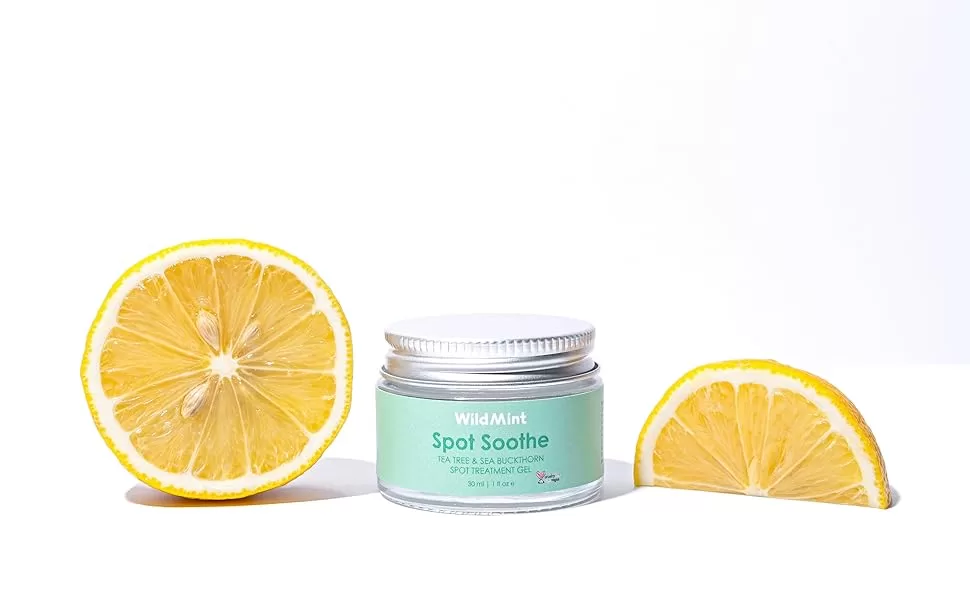
What is Acne Cosmetica and What Causes It?
Acne cosmetica, often referred to as ‘makeup-induced acne,’ is a skin condition triggered by certain cosmetic products. This form of acne is typically found on the face, neck, and upper chest, manifesting as small bumps, blemishes, blackheads, or whiteheads.
Causes of Acne Cosmetica
The primary culprit behind acne cosmetica is the use of products containing comedogenic substances. These ingredients have the potential to block pores, which in turn can trap bacteria, oil, and dead skin cells. When pores become clogged, they can become inflamed, resulting in acne outbreaks.
Common Pore-Clogging Ingredients
Staying informed about the ingredients in your cosmetics is crucial. Here are some common offenders that may lead to clogged pores:
- Acetylated Lanolin: Known for its moisturizing properties, yet can be pore-clogging.
- Cetearyl Alcohol + Ceteareth 20: A harmless duo unless used together in formulation.
- Isopropyl Myristate: Often used for its smoothing properties but notorious for clogging pores.
- Coconut Oil: Highly moisturizing but can lead to breakouts for some skin types.
- Ethylhexyl Palmitate: Commonly used as an emollient but may contribute to acne.
- Propylene Glycol Monostearate: Used in various skin products, but can cause blockages.
- Sodium Lauryl Sulfate: Known for cleaning, yet can irritate the skin and block pores.
By identifying and avoiding these ingredients, you can minimize the risk of developing acne cosmetica. Always opt for non-comedogenic products, which are specifically designed to prevent blocked pores.
How Does Lack of Proper Hygiene Contribute to Acne Breakouts?
Maintaining good hygiene is crucial for healthy skin, and neglecting it can significantly contribute to acne. Let’s delve into how poor hygiene habits can lead to breakouts.
Makeup Residue
Not removing makeup before bedtime allows residues to settle in your pores, mixing with oils and dead skin cells. This environment becomes a breeding ground for bacteria, leading to inflammation and acne flare-ups the next day.
Unclean Applicators
Using dirty makeup brushes and sponges can introduce bacteria to your skin. These tools collect oils, old makeup, and skin particles over time. When reused without cleaning, they transfer this mix back onto your face, increasing the risk of clogged pores and subsequent breakouts.
Skincare Product Build-up
Failing to cleanse moisture and treatment products off your skin can also exacerbate acne. Product build-up clogs pores, encouraging bacterial growth and preventing your skin’s natural renewal process.
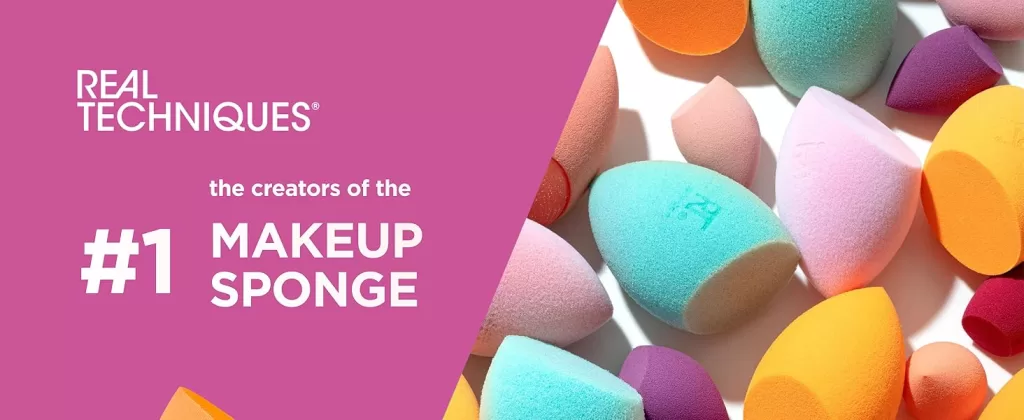
Simple Steps for Better Skin Hygiene
- Cleanse Twice Daily: Wash your face in the morning and night to remove dirt, oil, and impurities.
- Wash Your Tools: Regularly clean makeup brushes and sponges with warm water and gentle soap.
- Read Labels: Look for non-comedogenic products that don’t clog pores.
- Stay Consistent: Develop a daily routine to maintain consistent skin health.
By adopting these practices, you can minimize the impact of poor hygiene on your skin and keep acne at bay.
2. Skin Dehydration and Sensitivity
Many long-wear foundations contain alcohol-based ingredients that help with quick drying but can strip the skin of its natural moisture. Over time, this can lead to dryness, irritation, and an impaired skin barrier, making your skin more prone to environmental damage.
3. Premature Aging and Fine Lines
Since long-wear makeup tends to settle into fine lines and creases, it can accentuate wrinkles over time. Additionally, improper removal can contribute to oxidative stress, causing the skin to age faster.
4. Increased Risk of Irritation
People with sensitive skin may experience allergic reactions or irritation due to prolonged exposure to certain preservatives and fragrance components found in long-wear makeup.
If your skin is properly prepped and makeup is thoroughly removed, wearing it for 24 hours might not cause immediate damage. However, it’s not generally recommended, as prolonged wear can lead to clogged pores, dehydration, and increased irritation over time, compromising overall skin health.
What Are the Risks of Sharing or Using Expired Makeup Products?
Using makeup that’s past its expiration date or sharing it with others might seem harmless, but it can actually pose several risks to your skin and overall health.
1. Bacterial Contamination
Expired makeup provides a breeding ground for bacteria due to the breakdown of preservatives over time. Applying this contaminated product to your skin can lead to infections and breakouts.
2. Skin Irritation and Allergic Reactions
Ingredients in cosmetics can destabilize and change chemically as they age, increasing the likelihood of skin irritation or unexpected allergic reactions, even if you’ve used the product safely in the past.
3. Decreased Effectiveness
Expired products often lose their efficacy. Whether it’s eyeliner that smudges easily or foundation that doesn’t blend well, using outdated makeup can lead to disappointing results and wasted effort.
4. Spreading Infections
Sharing makeup, particularly items like lipsticks, mascaras, or makeup brushes, can spread infections such as cold sores or conjunctivitis between users. It’s essential to maintain personal hygiene by keeping your products to yourself.
In summary, playing it safe with your cosmetics can protect your skin and maintain hygiene standards. Always check expiration dates and refrain from sharing personal products to avoid these risks.
Expert Advice: How Long Should You Wear Makeup?
Dr. Madhu Chopra, a cosmetologist and Managing Director of Studio Aesthetique, Mumbai, advises” Long-wear makeup effects” in that while makeup is a staple in many routines, understanding safe wear time is crucial for skin health. For everyday makeup like foundation and concealer, 8 to 12 hours is generally safe, provided it’s thoroughly removed before bed. However, for heavier, event-style makeup, wear time should be limited to 6 to 8 hours to prevent irritation, clogged pores, and dullness. Prolonged wear—especially of full-coverage, long-wear formulas—can restrict the skin’s ability to breathe, increasing the risk of breakouts and sensitivity.
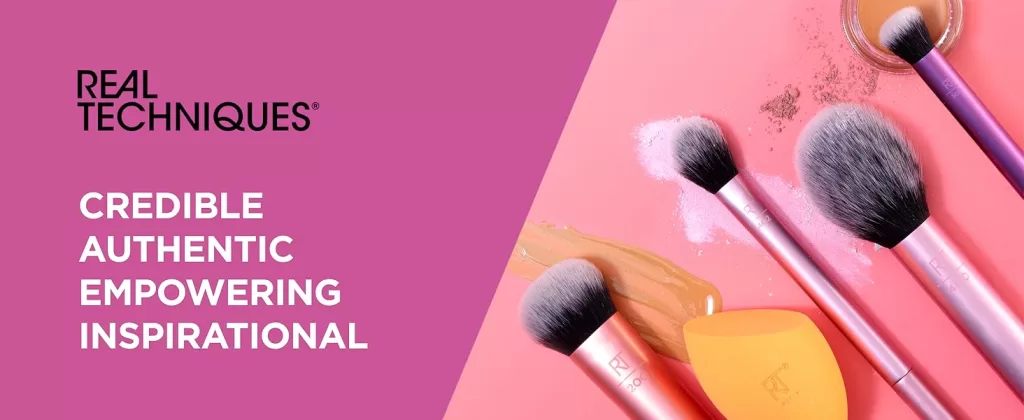
PRE-REMOVAL PREPARATIONS: ESSENTIALS FOR A THOROUGH CLEANSE
Before removing makeup, it’s crucial to have the right tools on hand to ensure a gentle yet effective cleanse. A well-prepared routine helps prevent irritation and ensures every trace of makeup is removed properly.
Start with a makeup remover suited to your skin type—whether it’s micellar water, a cleansing oil, or a balm, choose one that dissolves makeup without stripping natural moisture. Keep cotton pads, reusable remover cloths, or soft sponges nearby for easy application and removal.
If you’re wearing long-wear or waterproof makeup, consider a pre-cleanse step using a cleansing oil or balm to break down heavy formulas before moving to your regular cleanser. Also, don’t forget a gentle eye and lip remover to effectively dissolve waterproof mascara or long-lasting lipstick without excessive rubbing.
By having these essentials ready, you’ll set yourself up for a smoother, irritation-free makeup removal process that leaves your skin clean and refreshed.
Why Regularly Washing Makeup Brushes and Sponges is Crucial
When it comes to maintaining healthy skin, cleansing your makeup tools is often overlooked but extremely important. Here’s why you should make it a routine:
- Prevent Bacterial Build-up: Makeup brushes and sponges can collect oils, dust, and dead skin cells. Without regular cleaning, they become breeding grounds for bacteria, which can then transfer to your skin and potentially cause breakouts and infections.
- Extend the Life of Your Tools: Regular washing with mild soap helps maintain the quality of your brushes and sponges. By preventing product build-up, you can avoid damaging the bristles and fibers, ensuring they last longer and function effectively.
- Improve Makeup Application: Clean tools provide a smoother application, allowing for flawless makeup looks. Dirty brushes can lead to streaky finishes, uneven tones, and clogged pores.
- Ensure True Color Payoff: Wash your tools to ensure that old makeup doesn’t mix and alter the shades you’re applying, giving you true-to-color results as intended by the product.
Integrating regular cleaning into your beauty routine not only enhances your makeup’s performance but protects your skin from unnecessary irritations. Establishing this practice is an easy and effective way to promote both skincare and makeup hygiene.
How to Properly Remove Long-Wear Products
Removing long-wear makeup the right way is essential to preventing skin issues. Harsh scrubbing or using the wrong products can do more harm than good. Here’s a step-by-step guide for safe removal:
1. Use an Oil-Based Cleanser
Oil dissolves oil, making an oil-based cleanser the best first step for breaking down makeup, including waterproof mascara and long-lasting foundation. Massaging it in really helps loosen everything up.
- DHC Deep Cleansing Oil: A classic and popular choice, known for its effective makeup removal and simple formula.
- Clinique Take The Day Off Cleansing Balm: A balm-to-oil cleanser that melts away makeup, even waterproof mascara.
- Farmacy Green Clean Makeup Removing Cleansing Balm: Another excellent balm option with a focus on natural ingredients.
2. Follow with a Gentle Cleanser
Following up with a gentle cleanser is crucial. The oil cleanser removes the bulk of the makeup, but the second cleanse ensures you’ve gotten rid of any remaining residue, dirt, and oil that the oil cleanser might have loosened. This double cleansing method is really effective.
CeraVe Hydrating Facial Cleanser: A fragrance-free and non-foaming cleanser ideal for dry or sensitive skin.La Roche-Posay Toleriane Hydrating Gentle Cleanser: Another gentle option suitable for sensitive skin.Cetaphil Gentle Skin Cleanser: A classic, dermatologist-recommended cleanser that’s gentle and effective.
3. Ditch the Wipes (Most of the Time)
While they’re convenient, they often just smear makeup around and can be quite harsh on the skin due to the rubbing required. They’re not ideal for truly cleansing. However, there are some situations where a wipe can be helpful – for example, if you’re traveling and don’t have access to water, or if you just need to quickly remove eye makeup before a workout. If you do use wipes, look for ones specifically designed to be gentle and fragrance-free.
(Use Sparingly – Example for Travel):
- Neutrogena Makeup Remover Cleansing Wipes: If you must use wipes, these are a decent option, but remember they shouldn’t be your primary cleansing method. Look for fragrance-free versions.
4. Use a Soft Microfiber Cloth
Microfiber cloths are a fantastic alternative to rough washcloths. They’re soft and help to gently lift away makeup and any remaining cleanser without being abrasive. Just make sure to wash the cloth regularly to keep it clean.
You can find these at most drugstores or online. Just search for “microfiber facial cloths.” Make sure they are soft and designed for the face.
5. Hydrate and Repair the Skin
Cleansing can sometimes disrupt the skin’s natural barrier, so replenishing moisture with a toner and moisturizer is vital. This helps prevent dryness, irritation, and keeps skin healthy. Look for hydrating ingredients like hyaluronic acid and ceramides.
Thayers Witch Hazel Toner: A gentle toner that comes in various scents (or unscented).Kiehl’s Calendula Herbal Extract Alcohol-Free Toner: A calming and soothing toner.Hada Labo Gokujyun Hyaluronic Lotion: A Japanese toner known for its hydrating properties (lotion in this context refers to a toner-like product).
6. Lightweight Moisturizer:
- CeraVe Facial Moisturizing Lotion: A lightweight and hydrating lotion with ceramides.
- La Roche-Posay Toleriane Double Repair Face Moisturizer: A soothing and hydrating moisturizer for sensitive skin.
- Neutrogena Hydro Boost Water Gel: A lightweight, water-based moisturizer that’s great for oily skin.
Additional tip: Consider adding a cleansing balm to your routine. These are solid oil cleansers that melt into a liquid when massaged into the skin. They can be very effective at removing makeup and are often less messy than liquid oil cleansers.

Nurturing Your Skin: Post-Makeup Removal Skincare Routine
No matter your skin type—oily, dry, combination, or sensitive—a gentle and thoughtful skincare routine after removing makeup can do wonders for maintaining a glowing, healthy complexion.
Step 1: Prioritize Hydration
After cleansing, it’s essential to restore your skin’s moisture balance. Use a hydrating toner or essence to replenish your skin’s natural barrier. Simply apply a few drops to a cotton pad or your fingertips and gently pat it into your skin. This step helps balance your skin’s pH levels and enhances its ability to absorb the next products in your routine.
Step 2: Address Your Skin’s Unique Needs
Tailor your routine with targeted treatments that cater to your specific concerns.
For Oily or Acne-Prone Skin (Lightweight, Oil-Free, Salicylic Acid or Niacinamide):
- Paula’s Choice 2% BHA Liquid Exfoliant: Contains salicylic acid to unclog pores and exfoliate. Often recommended for acne-prone skin.
- The Ordinary Niacinamide 10% + Zinc 1%: Niacinamide can help regulate oil production and reduce redness. This is a budget-friendly option.
- La Roche-Posay Effaclar Salicylic Acid Acne Treatment: A targeted treatment that can be used as a spot treatment or all over the face.
- COSRX BHA Blackhead Power Liquid: Another salicylic acid option, popular in K-beauty routines.
For Dry or Dehydrated Skin (Richer Serum/Facial Oil, Hyaluronic Acid or Ceramides):
- The Ordinary Hyaluronic Acid 2% + B5: A simple and affordable hyaluronic acid serum.
- Skinceuticals Hydrating B5 Gel: A more premium hyaluronic acid serum with added vitamin B5 for extra hydration.
- Cerave Hyaluronic Acid Serum: A drugstore option with ceramides to help restore the skin barrier.
- Kiehl’s Midnight Recovery Concentrate: A facial oil with squalane and evening primrose oil, designed to be used at night.
- Biossance Squalane + Vitamin C Rose Oil: A lightweight facial oil that combines squalane, vitamin C, and rose extract.
Step 3: Lock in Moisture
No matter your skin type, always finish with a nourishing moisturizer to seal in hydration and protect your skin.
Neutrogena Hydro Boost Water Gel: A lightweight, water-based moisturizer that provides hydration without feeling heavy or greasy. La Roche-Posay Toleriane Double Repair Matte Moisturizer: Specifically formulated for oily, sensitive skin, this moisturizer provides hydration and helps repair the skin barrier while controlling shine. CeraVe AM Facial Moisturizing Lotion: This lightweight lotion contains SPF and is a good option for daytime use.
Step 4: Don’t Forget the Eye Area
The delicate skin around your eyes deserves special attention. Apply a pea-sized amount of eye cream or gel using your ring finger, gently tapping it around the orbital bone. Avoid direct contact with the eyes. This step helps hydrate, firm, and brighten the under-eye area, reducing the appearance of dark circles and fine lines.
By incorporating these simple yet effective steps into your post-makeup removal routine, you can keep your skin healthy, refreshed, and glowing. Tailor the products to your skin type, and enjoy the benefits of a well-nurtured complexion!
Remember, it’s always a good idea to patch test new products before applying them to your entire face to avoid any potential allergic reactions or irritation. Also, what works for one person might not work for another, so you may need to try a few different products before finding the right one for you.
Alternatives for Long-Lasting Coverage Without Irritation
If you love the staying power of long-wear makeup but want to avoid potential skin damage, consider these alternative solutions:
1. Lightweight, Breathable Foundations
Light Coverage/Skin Tints (Great for a natural look):
- Ilia Super Serum Skin Tint SPF 40: This is a popular choice that combines light coverage with skincare benefits like hyaluronic acid and SPF. It gives a dewy, radiant finish.
- Glossier Perfecting Skin Tint: Very sheer coverage, meant to even out skin tone rather than completely cover. It’s ideal for a “no-makeup makeup” look.
- Laura Mercier Tinted Moisturizer: A classic for a reason. Provides light coverage, hydration, and a natural finish.
Light-Medium Coverage Foundations:
- NARS Pure Radiant Tinted Moisturizer: Offers slightly more coverage than a skin tint while still feeling lightweight. It has a radiant finish and contains good-for-skin ingredients.
- MAC Face and Body Foundation: A buildable, water-based foundation that provides a natural, satin finish. It’s often used for body makeup as well.
- Make Up For Ever Water Blend Face & Body Foundation: Another water-based option that’s lightweight and buildable. It’s long-wearing and comfortable.
- Estée Lauder Double Wear Sheer Long-Wear Makeup: This offers a lighter version of the famous Double Wear foundation, providing buildable coverage with a natural matte finish.
Powder Foundations (Good for oily skin):
- MAC Studio Fix Powder Plus Foundation: A classic powder foundation that provides medium to full coverage and a matte finish.
- IT Cosmetics Celebration Foundation Powder: Offers buildable coverage and a natural matte finish. Often praised for its ease of use.
Long-wear makeup effects: Important Considerations
- Skin Type: If you have oily skin, you might prefer a matte finish. If you have dry skin, look for hydrating formulas with a dewy finish.
- Undertone: Choosing the right undertone is crucial for a natural look. Many brands have online tools or offer in-store shade matching to help you find your perfect match.
- Testing: The best way to find your perfect lightweight foundation is to try samples. Many stores offer sample sizes, allowing you to test the product before committing to a full-size bottle.
Remember, “breathable” is subjective. What feels lightweight to one person might feel heavy to another. Experimentation is key!
2. Setting Sprays Instead of Heavy Layers
For setting sprays that can help extend the wear of your makeup without feeling heavy, a popular and well-regarded option is the Urban Decay All Nighter Makeup Setting Spray. It’s often praised for its ability to keep makeup in place for hours and prevent it from smudging or fading.
4. Mineral-Based Makeup
For a mineral-based foundation, a popular and well-regarded example is the bareMinerals Original Foundation. It’s a loose powder foundation that’s known for its buildable coverage and natural finish.
5. Silicone-Free Primers
Many primers contain silicones, which can trap debris in the pores. Opt for silicone-free primers with hydrating and mattifying properties instead.
One example product for silicone-free primers is Tatcha The Silk Canvas Protective Primer.

Final Thoughts: Long-wear makeup effects
Long-wear makeup may offer convenience, but it comes with hidden costs. Extended use can lead to clogged pores, dehydration, irritation, and premature aging if not properly removed. However, by using the right cleansing techniques and choosing skin-friendly alternatives, you can enjoy long-lasting coverage without compromising your skin’s health.
FAQs: Long-wear makeup effects
1. Can I wear long-wear makeup every day?
It’s best to give your skin a break by using lighter coverage products or skipping makeup on some days to let your skin breathe.
2. What’s the best way to remove waterproof makeup?
Use an oil-based cleanser first, followed by a gentle facial cleanser to ensure all residue is removed without stripping the skin.
3. Does long-wear makeup cause acne?
It can contribute to breakouts if not removed properly, especially for those with acne-prone skin. Choosing non-comedogenic formulas can help reduce the risk.
4. Are there any skincare steps that help makeup last longer without relying on long-wear formulas?
Yes! Prepping your skin properly can enhance makeup longevity without heavy formulas. Start with a well-moisturized base, use a mattifying or gripping primer suited to your skin type, and set your makeup with a finely milled translucent powder. A lightweight setting spray can also help lock in your look without the drawbacks of long-wear foundations.
5. How can I tell if a long-wear foundation is suitable for my skin type?
Check the ingredient list and formulation. If you have oily or acne-prone skin, look for oil-free, non-comedogenic formulas that won’t clog pores. For dry or sensitive skin, avoid high alcohol content and opt for foundations infused with hyaluronic acid, squalane, or ceramides to maintain hydration. If irritation is a concern, fragrance-free and dermatologist-tested products are safer choices.
Related article

Alluring Erotic Beauty Makeup Tips for a Stunning Look

Explore more articles like this @ Where And How Resources
If you found this article helpful, don’t forget to share it with your friends and followers!
